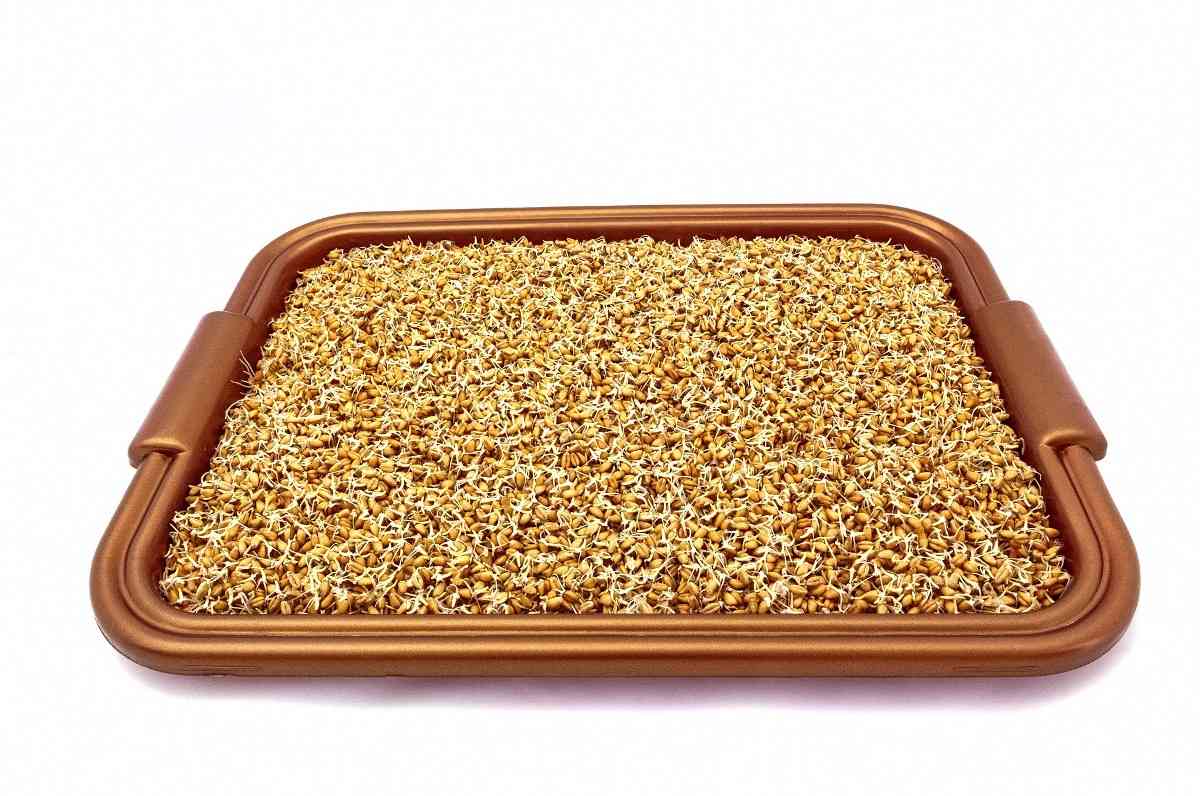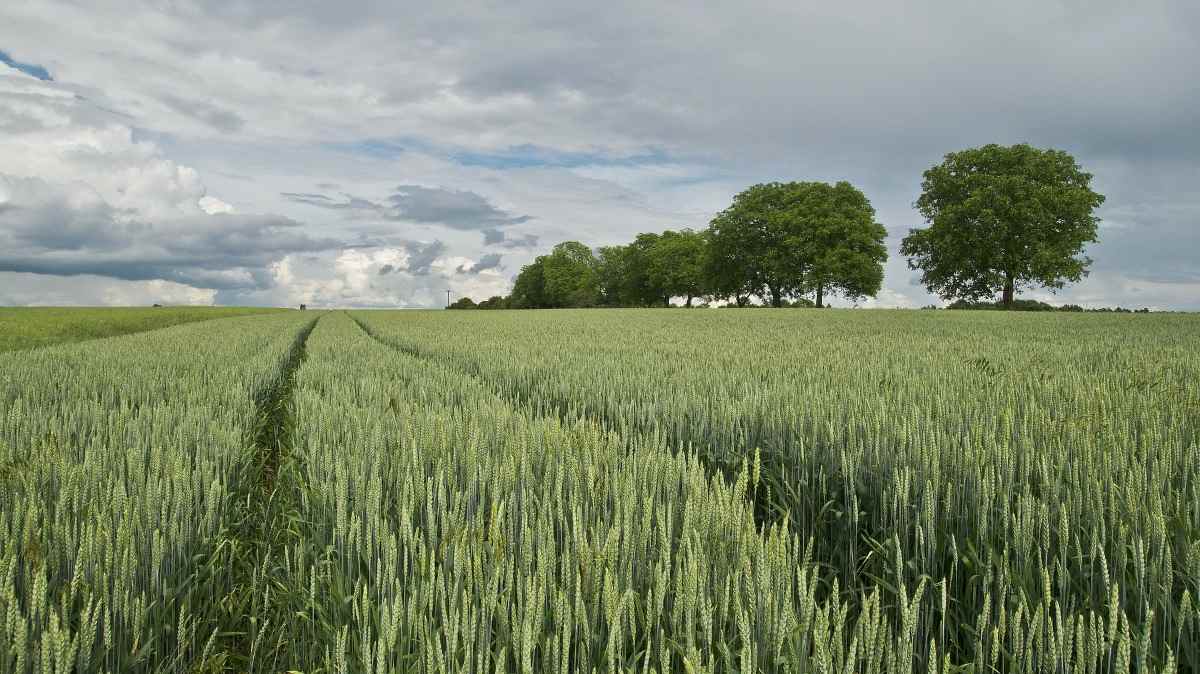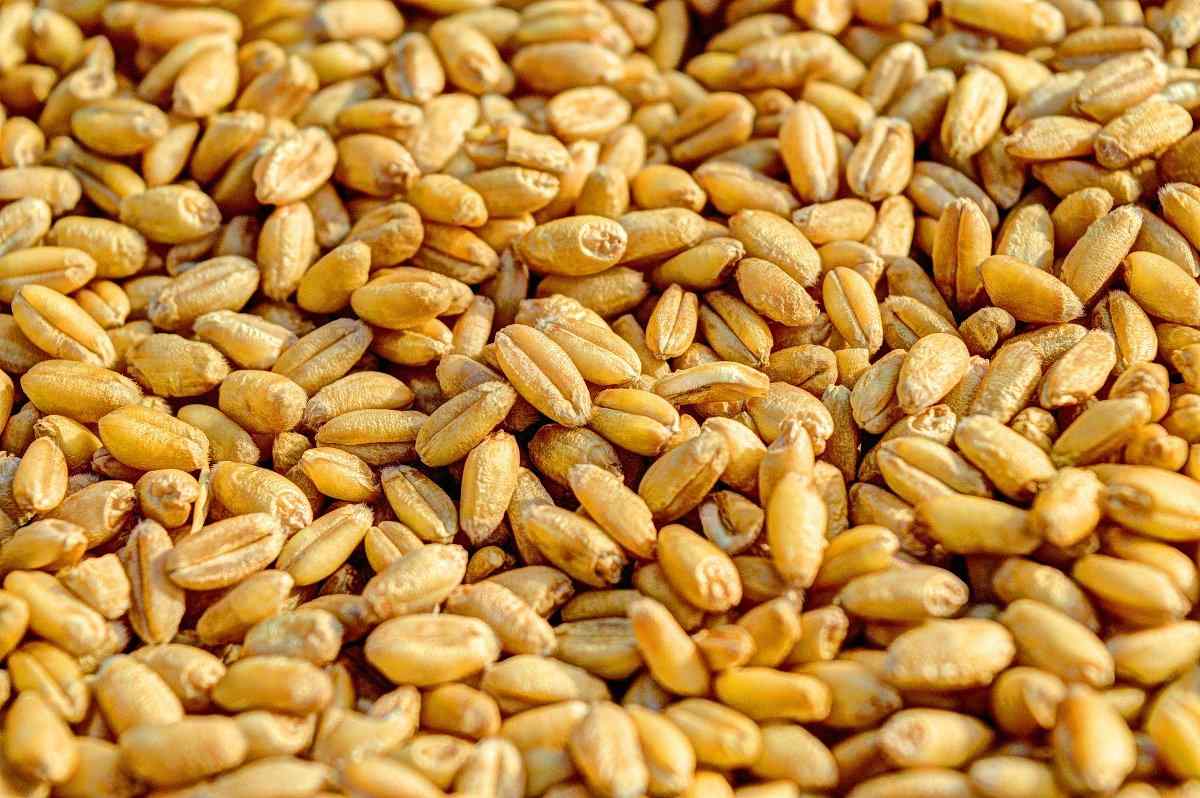Introduction to Wheat seed germination process
Wheat is a widely adapted crop and it is grown from temperate, irrigated to dry and high-rain-fall areas and from warm, humid to dry, cold environments. Seed germination is a factor that contributes yield of the Wheat crop. Among the abiotic factors, the temperature is considered an important issue for Wheat germination, because it persuades the rate of water and additional substrates needed for growth and development. The life cycle of Wheat is the same for all species, while it can take place at different times. Wheat is one of the world’s commonly consumed cereal grains. Wheat comes from a type of grass that is grown in countless varieties worldwide. Bread wheat is the primary species. Several other closely related species contain durum, emmer, einkorn, and Khorasan Wheat.
In this article we also discussed below topics;
- How do you germinate Wheat seeds
- Wheat seed germination temperature
- How do you germinate Wheat seeds
- Factors affected for Wheat seed germination
- How long does Wheat seed take to germinate
- Process for germinating Wheat seeds
- Wheat seed germination period
A step by step guide to Wheat seed germination

Wheat occupies the prime position among all the food crops in the world. In India, Wheat is the second important food crop being next to rice and contributes to the total food grain production of the country to the extent of about 25%. It has played a very vital role in stabilizing food grain production in the country over the past few years.
Soil requirement for Wheat cultivation
Wheat is grown in a variety of soils. Soils with a clay loam or loam texture, good structure, and moderate water holding capacity are ideal for Wheat farming. Care must be taken to avoid very porous and excessively drained soils. The soil must be neutral in its reaction. Heavy soil with good drainage is appropriate for Wheat cultivation under dry conditions. These soils absorb and then retain rainwater well. Though, heavy soils with poor structure and poor drainage are not suitable as Wheat is sensitive to waterlogging. Wheat can be successfully grown on lighter soils provided water and nutrient holding capacity are improved.
Seed size and seed rate for Wheat seed germination
Seed size is a very important parameter, which influences the germination, growth, and biomass of the nursery seedlings and that trend leads to the future crop. Sowing of the mixed seed of a species can result in a non-uniform density of seedlings, which may lead to heterogeneity in the vigor and size of the seedlings. The seed size controls the germination and initial seedling growth in many tree species. Germination can be dependent on the ability of the seed to utilize reserves more efficiently, by mobilization of seed reserves for seed germination traits. Seed grading based upon their size and weight is a common practice to regulate seed germination and subsequent seedling growth.
A seed rate of about 100 kg/ha at 38 g/1000 seeds is required under irrigated timely sown conditions. For late sown and rainfed conditions seed rate must be increased to 125 kg/ha. Seeding depth should be around 5 to 7 cm with a row spacing of 20-23 cm.
Factors affecting germination and emergence
Dormancy
In a Wheat seed, germination begins after a short period of dormancy. Wheat’s have a low level of dormancy that is easily broken down, allowing germination to begin. Some Wheat varieties have a dormancy derived from their seed coat that lasts 3 to 7 months. Then this dormancy is linked to anthocyanins, the enzymes that give the seed coat the red color.
Moisture
Soil moisture influences the speed of seed germination. Seed germination is rapid if the soil is moist. When the soil dries to near the permanent wilting point, the speed of seed germination slows. Instead of 5 days at 7°C when there is adequate moisture, seed germination will take 10 days at 7°C when the soil reaches the permanent wilting point. The germination process in the seed can stop and start in response to available moisture.
Temperature for Wheat seed germination
The germination process is dependent on temperature. The ideal temperature range for Wheat germination is 12° to 25°C, but germination will occur between 4° and 37°C. The speed of germination is driven by accumulated temperature or degree-days. Degree-days are the sum of the average daily maximum and minimum temperature ranges over consecutive days. Wheat requires 35 degree-days for visible seed germination to occur. For example, at an average temperature range of 7°C, it takes 5 days before visible germination. At 10°C, it takes 3 to 5 days.
Water requirement for Wheat seed sprouting
Water constitutes a basic requirement for seed germination. A mature seed is extremely dry and needs to absorb, through a process of imbibitions, a significant quantity of water, relative to the dry weight of the seed. Generally, the minimum water content required in the grain for Wheat germination is about 35% to 45% by weight.
Seed germination is generally impeded by excess moisture mainly due to a restriction of oxygen availability. When seed imbibes water, enzymes are activated which break down stored food reserves in the seed into metabolically helpful chemicals.
Sowing time in Wheat cultivation
In case if you miss this: Chilli Flower Drop, Causes, Control Methods.

Based on temperature requirement it has been found that for indigenous Wheat last week of October, for long-duration dwarf varieties like Kalyansona, and Arjun, etc. first fortnight of November and for short duration dwarf Wheat like Sonalika, and Raj 821, etc. second fortnight is the best sowing time. Under exceptionally late sown condition it can be delayed to the latest by the 1st week of December beyond which if the area is very small transplanting may be practiced.
The spacing of Wheat seed or Wheat plant distance
For irrigated, timely sown Wheat, a row spacing of about 15 to 22.5 cm is followed, but 22.5 cm between the rows is considered to be the optimum spacing. Under irrigated late-sown conditions, a row spacing of 15 to 18 cm is optimum. For dwarf wheat’s, the planting depth must be between 5 and 6 cm. Planting beyond this depth results in a poor stand. In the case of conventional tall varieties, the depth of sowing can be 8 or 9 cm.
The seed treatment procedure for Wheat
The seed of loose smut-susceptible varieties must be given solar or hot-water treatment. If the Wheat seed is used for sowing, and not for human consumption or for feeding cattle, it can be treated with Vitavax. Though, fungicide seed treatments help to reduce losses caused by seed transmitted and soil-borne fungal diseases of Wheat. Some seed treatment products have a fungicide and an insecticide and offer additional protection against fall season insects such as aphids.
Wheat germination and emergence
When seeds are located in warm, moist soil, food materials in the seed become soluble and move into the embryo to nourish it. The rate of this germination process is controlled by soil temperature. The embryo pushes out the first seminal or seed root which grows downward. This root anchor the seedling pushes into the soil and increases the surface area obtainable to absorb water from the soil into the seedling. It takes a definite number of heat units for this root to appear in plants located in good soil moisture.
The minimum water content required in the grain for Wheat seed germination is 35 to 45 percent by weight. Seed germination may occur between 4° and 37°C, the optimal temperature being from 12° to 25°C. Seed size does not alter germination but affects growth, development, and crop yield. Bigger seeds have many advantages when compared to smaller seeds, for example, the advantages are faster seedling growth, a higher number of fertile tillers per plant and higher grain yield. The advantage of bigger seeds is demonstrated when the Wheat crop is grown under environmental stresses, particularly drought.
When crop emergence occurs, the seed embryo has 3 to 4 leaf primordia and almost half of the leaf primordia are already initiated. During the germination process, the seminal roots grow first, followed by the coleoptile, which protects the emergence of the first leaf. The length of the coleoptile limits sowing depth, and its length changes with genotype, increasing slightly when seeds are sown deeper. Though, semi-dwarf Wheat has shorter coleoptiles than tall Wheat.
From sowing to emergence, seedling mortality, and thus crop establishment, is a problem when soil temperatures are high. Plant emergence and population establishment are the starting points of Wheat crop growth. In hot environments, however, the maximum soil temperature in the top centimeters may exceed maximum air temperature range by 10° to 15°C if the soil surface is bare and dry and radiation intensity is high. Under such conditions, maximum soil temperature can reach 40° to 45°C with serious effects on seedling emergence. The initial plant population may fall below 100 plants/m considered to be deleterious to Wheat crop yield.
Seedling stage of Wheat
During the seed germination stage, adequate temperature and moisture are needed for Wheat seeds to germinate. Wheat seeds enjoy an optimum temperature range between 12° and 25°C. Under favorable conditions, seedling emergence occurs within seven days. Until the first leaf becomes functional, the seedling will depend on energy and nutrients stored in the Wheat seed.
Different phases of Wheat seed germination
Wheat seed germination begins when the seed absorbs water and ends with the appearance of the radical. Germination has three phases;
- Water absorption (imbibition)
- Activation
- Visible germination
Water absorption – The first phase starts when the seed begins to absorb moisture. Generally, a Wheat seed needs to reach a moisture content of around 35 to 45% of its dry weight to begin germination. Water vapor can begin the seed germination process as rapidly as liquid can. Wheat seeds begin to germinate at a relative humidity of about 97.7%. Soil so dry that roots cannot extract water still has a relative humidity of about 99%, much higher than that of dry seed. So even in dry conditions, there can be enough moisture for the seed to absorb and begin the first phase, but it takes longer than in moist conditions.
You should not miss this: Maize Seed Germination, Time, Procedure.
Activation – Once the embryo has swollen and it produces hormones that stimulate enzyme activity. The enzymes break down starch and then protein stored in the seed to sugars and amino acids, providing energy to the growing embryo. The larger the Wheat seed, the more starch and, consequently, the energy it will have. If the Wheat seed dries out before the embryo starts to grow, it remains viable. Phase 2 continues until the rupture of the seed coat, the first visible sign of seed germination.
Visible germination – In this phase the embryo starts to visibly grow. The radical emerges, followed soon after by other primary roots and the coleoptile. The enzymes formed in Phase 2 mobilize sugars and amino acids stored in the seed and enable their transfer to the growing embryo.
Reasons for Wheat may be slow to emerge
Deep Planting – Deeper than the coleoptiles’ ability to elongate, can slow seed emergence or cause stand establishment problems. Varieties differ in their coleoptile lengths, but for the most part, Wheat must be planted about 1.5 inches deep. Most plant varieties can emerge at slightly deeper depths if the soil is not too restrictive and temperatures are in the ideal range. But if Wheat is planted deeper than about 2.5 inches, it is possible the Wheat cannot emerge.
Poor Quality Seed – The seed was tested for germination by a licensed laboratory and had an acceptable seed germination rate, seed quality not be a problem. If germination testing on the seed lot was not done by a laboratory, poor seed quality can be a problem if other potential problems have been ruled out. At times, Wheat doesn’t germinate simply as the seed has an unusually long seed dormancy requirement. Then this is hard to identify in the field and can cause producers to replant when it’s not necessary. There are a variety of differences in seed dormancy, though this hasn’t been tested recently.
Insects – False wireworms can be the cause of poor seed emergence. False wireworms are soil-inhabiting, yellowish to orange-colored worms up to about 11/2 inches long. A pair of short antennae are clearly visible on the front of the head and the head region does not appear flattened when viewed from the side. They follow the drill row in dry soils, feeding on the seeds prior to germination.
Wheat harvesting
The Wheat crop is harvested by cutting the plants with a sickle close to the ground, in March-April. Thrashing is the next procedure, and this involves the separation of the grain from the spike. Thrashing is done under the feet of bullocks or by thrashing machines. After the thrashing process, the Wheat is winnowed and sifted.
The yield of Wheat
The national average yield of Wheat grain is approximately 12 to 13.8 quintals per hectare.
Commonly asked questions about Wheat cultivation

Does Wheat need sunlight to grow?
Wheat requires a lot of suns and it grows best in full sun, but some parts of a field can grow well if partially shaded. It is a grass that uses the sun to create growth energy. More sun, as long as the plants’ water and temperature requirements are met, generally results in better yields.
How often does Wheat need to be watered?
Adequate soil water for winter Wheat is important in the flowering growth stage. During this period the root zone must be increased from 50 cm to 100 cm and soil water should not go below 60 percent of available. Wheat is a cool-season crop; it does not require much water. Wheat needs between 12 and 15 inches of rain over a growing season to produce a good Wheat crop.
How much time does it take for Wheat to grow?
Wheat is planted in the fall, usually between October and December, and grows over the winter to be harvested in the spring or early summer. Typically it takes about 7 to 8 months to reach maturity and it creates pretty golden contrast in spring gardens.
What affects wheat production?
Factors affecting the establishment percentage contain management factors such as depth of sowing, row spacing, seed size, and herbicide application as well as environmental factors that are soil moisture and temperature. The presence of pests and diseases also affect Wheat crop establishment.
What are the problems of wheat cultivation in India?
Most of the time wheat seed is sown by broadcasting seeds. Even though it is the easiest way of sowing, it has a lot of disadvantages such as improper germination due to uneven sowing depth, increased seed rate, uneven row distribution.
The conclusion of Wheat grain sprouting
If you are a commercial wheat grower, select a quality seed for a high percentage of wheat grain germination. You may check the Cost of Cultivation of Saffron, Saffron Business Plan.
AgriFarming,
I should have reread something like this after not growing wheatgrass in 4 years. I thought I remembered how to do it, but I ended up doing a germinating process that lasted 2 whole days. I realized my mistake after some time and drained them to let them breath. Did I drown the seeds? Is there any chance that my initial one pound of seeds can be salvaged?
– JL